If you want to understand espresso, first understand these names and origins!
Professional coffee knowledge exchange more coffee bean information please follow the coffee workshop (Wechat official account cafe_style)
In recent years, there are so many cafes in China that even convenience stores are scrambling to sell freshly ground coffee. Looking at today's coffee culture around the world, the mainstream is espresso (coffee è), and even the word caff è means "coffee shop" in Italian. If you want to understand the true meaning of espresso, you might as well get to know these common espresso names.
As the birthplace of the Renaissance, Italy has an important influence in literature and art. For example, there are many words borrowed from Italian in English. The influence of Italian on English in popular culture is more fully reflected in espresso.
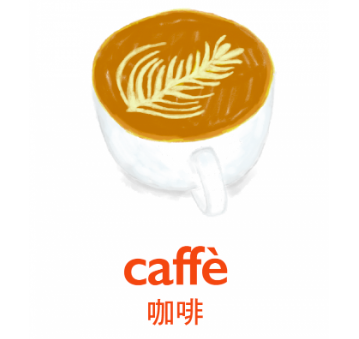
Frappuccino-- "Frappuccino"
When it comes to espresso, you have to mention Starbucks. Starbucks is the world's largest coffee chain, founded in Seattle, Washington, USA. It has successfully popularized espresso, and other peers have followed suit. Starbucks has a special frozen drink called "frappuccino". This frappuccino is a mixture of French frapp é (with crushed ice; frozen into a smoothie) and Italian cappuccino (cappuccino). You see, the name of Star Frappuccino has already told you all the recipe and technology.
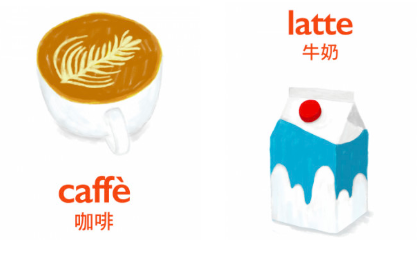
Caff è latte-- "latte"
"latte" many people like to drink, the milk is full of flavor. Latte is latte in English and comes from Italian, which means "milk". The complete word for latte is caff è latte (coffee with milk). There are several versions of the spelling of latte in English. In addition to the standard full name caff è latte and latte for short, the prime above è is often omitted and becomes the English culture of caffe latte. Other different spellings are not listed. The latte can also be latte art, which literally means "latte art". However, the word "latte" always gives people an association of rough men doing drudgery, and the picture of white-collar workers sipping mellow coffee is simply out of touch and out of harmony. I really don't know who first made this translation.
Cappuccino-- "cappuccino"
A latte-like espresso is cappuccino, which is hard to spell, with two p and then two c in the middle. Cappuccino has something to do with religion because the color of the coffee is reminiscent of the robe of the Catholic Friar of St. Franciscans (Capuchin), and the pointed foam on it is similar to the small pointed hat worn by the monk, hence the name.
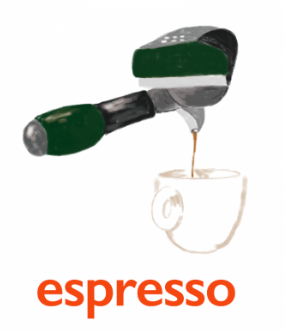
Espresso-- "espresso"
Lattes and cappuccinos are coffee with milk or milk, and the coffee used is based on "espresso". This espresso is homologous with the English word express, which originally means "press out" and also means "very fast". The principle of espresso is that the coffee powder is ground by boiling high-pressure water, and the coffee is forced out by high temperature and high pressure, hence the name. Thus it can be seen that the essence of espresso lies in "pressing" and "fast", but it has no meaning of "concentration". This translation has deterred many consumers who try to taste espresso.
In addition, espresso has another common variant word expresso, but many experts think it is incorrect.
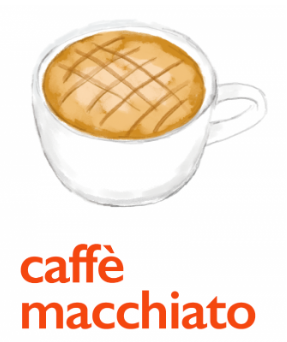
Caff è macchiato-- "Macchiato"
There is also a "macchiato", the full name is coffee è macchiato (macchiato), which originally means "coffee with stains". Macchiato is espresso with a small amount of milk or milk foam, so that the coffee drink feels as if it is stained with white spots. Remember! It's completely different from the "caramel macchiato" made of Starbucks vanilla coffee topped with caramel sauce.
Espresso con panna-- "Campbell Blue"
There is also an older espresso called con panna, which means "espresso with cream". Con is the Italian word for with and panna is the Italian word for cream, which refers to whipped cream. Therefore, Campbell blue is made by covering espresso with a thick layer of whipped cream.
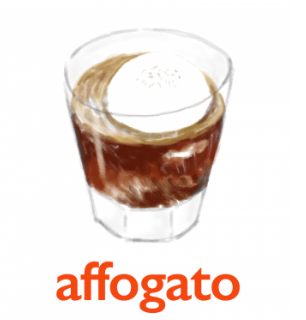
Affogato-- "Avjiadou"
In recent years, a new product of affogato has become very popular, with some translating as "Afgado" and others as "Afchido", which is a mix of coffee and ice cream, somewhere between drinks and desserts. Avjiadou's method is to pour espresso on Vanilla Ice Cream, so that the ice cream is "submerged" by coffee, which is the original meaning of affogato Italian.
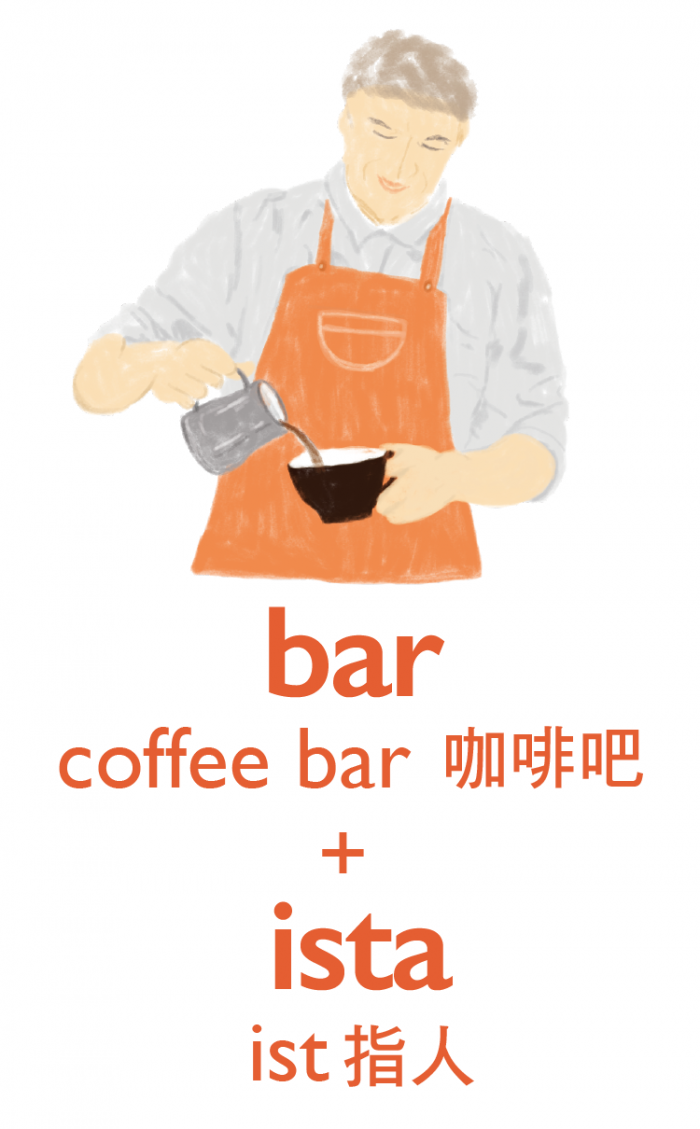
Barista-- "barista"
The maker of espresso and related drinks such as latte, cappuccino, macchiato and Campbell blue is called barista in English and is usually translated as "barista" in Chinese. The word also comes from Italian and originally refers to "coffee bar chef". Barista's bar reveals that the place of work is in the coffee bar (coffee bar), and ista is equivalent to the English word ist, which refers to people.
Few people who come into contact with espresso for the first time are not surprised because these obscure and unpopular nouns are really confusing, but if you know a little more about the meaning of espresso, I believe you can easily be fascinated by the charm of espresso.
END
Important Notice :
前街咖啡 FrontStreet Coffee has moved to new addredd:
FrontStreet Coffee Address: 315,Donghua East Road,GuangZhou
Tel:020 38364473
- Prev
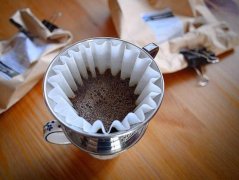
Hand coffee skills-what are the main factors that affect the flavor of coffee?
Professional coffee knowledge exchange more coffee bean information Please follow the coffee workshop (Wechat official account cafe_style) in our store provides five kinds of hand filter, namely Kalita filter cup, HARIO cone filter cup, KONO cone filter cup, BONMAC single-hole filter cup, flannel filter and three kinds of hand pot, the aim is to enable all customers to use the fun of different filters.
- Next
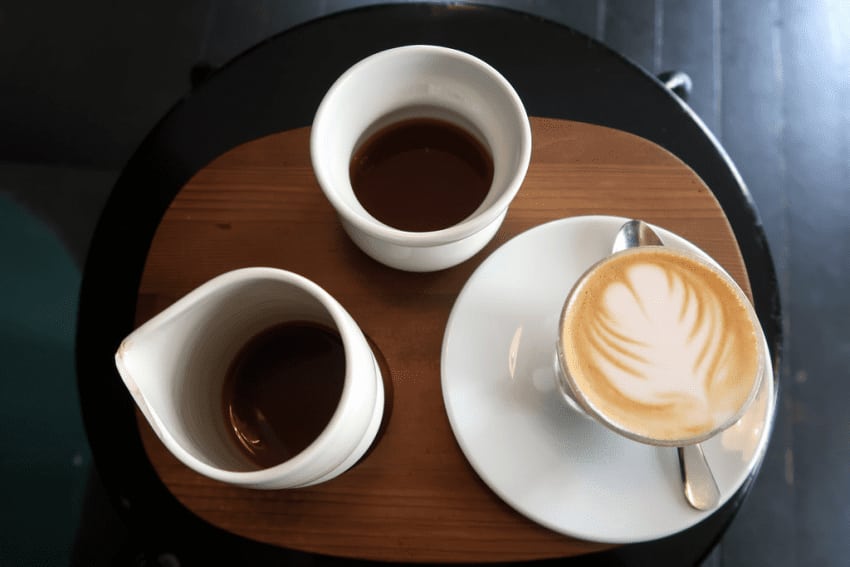
Money-saving strategy for brewing coffee at home-- A guide to the selection of equipment and coffee beans for beginners
Professional coffee knowledge exchange more coffee bean information Please follow the coffee workshop (Wechat official account cafe_style) the editor has been making coffee for about seven or eight years. I dare not say I am a master, but I have stepped on a lot of thunder that I can step on. Today, the editor wants to describe how beginners should enter the field of brewing coffee from a consumer's point of view. Drink the most suitable amount with the most economical amount.
Related
- Beginners will see the "Coffee pull flower" guide!
- What is the difference between ice blog purified milk and ordinary milk coffee?
- Why is the Philippines the largest producer of crops in Liberia?
- For coffee extraction, should the fine powder be retained?
- How does extracted espresso fill pressed powder? How much strength does it take to press the powder?
- How to make jasmine cold extract coffee? Is the jasmine + latte good?
- Will this little toy really make the coffee taste better? How does Lily Drip affect coffee extraction?
- Will the action of slapping the filter cup also affect coffee extraction?
- What's the difference between powder-to-water ratio and powder-to-liquid ratio?
- What is the Ethiopian local species? What does it have to do with Heirloom native species?

